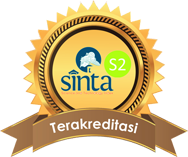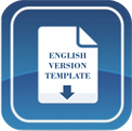Analysis Students’ Scientific Explanation Skills Using Explanation Driven Inquiry Learning on Acid-Base Topic
DOI:
https://doi.org/10.15575/jtk.v6i1.9493Keywords:
acid-base, explanation driven inquiry, scientific explanation skillsAbstract
This study analyzes students' scientific explanation skills using explanation driven inquiry (EDI) learning on acid-base topics. The method used a quasi-experimental design with a posttest-only control group design. The research sample consisted of two groups that 30 students each in EDI (experimental group) and guided inquiry (GI) (control group). The research instrument was essay questions. The EDI learning model provides better results than the guided inquiry (GI) learning model for students' scientific explanation skills. The quality of the students' scientific explanation skills reached the highest level (level 4). EDI class students were more likely to achieve it than the GI class.
References
Akkus, R., Gunel, M., & Hand, B. (2007). Comparing an inquiry-based approach known as the science writing heuristic to traditional science teaching practices: are there differences?. International Journal of Science Education, 29(14), 1745-1765. https://doi.org/10.1080/09500690601075629.
Asniar, A. (2016). Profil penalaran ilmiah dan kemampuan argumentasi mahasiswa sains dan non sains. Jurnal Penelitian dan Pembelajaran IPA, 2(1), 30-41. http://dx.doi.org/10.30870/jppi.v2i1.428.
Berland, L. K., & Reiser, B. (2008). Making sense of argumentation and explanation. Science Education, 3(1), 26-55. https://doi.org/10.1002/sce.20286.
Braaten, M., & Windschitl, M. (2011). Working toward a stronger conceptualization of scientific explanation for science education. Science Education, 95(4), 639-669. https://doi.org/10.1002/sce.20449
Demircioglu, T., & Ucar, S. (2015). Investigating the effect of argument driven inquiry in laboratory instruction. Journal of Educational Sciences, 12(1), 267-283. https://doi.org/10.12738/estp.2015.1.2324
Firman, H. (2016). Diagnosing weaknesses of indonesian students’ learning. In: thien L. M., Razak N. A., Keeves J. P., Darmawan I. G. N. (eds) what can pisa 2012 data tell us?. Rotterdam: SensePublishers. https://doi.org/10.1007/978-94-6300-468-8_5
Gotwals, A. W., Songer. N. B., & Bullard, L. (2009). Assessing student progressing abilities to construct scientific explanation. Paper presented at the Learning Progression in Science (LeaPS) Conference, June 2009. Iowa City, IA.
Kastberg, D., Chan, J. Y., Murray, G., & Gozales, P. (2016). Performance of US 15 years-old student science, reading, and mathematic literacy in an international context. Wangsington DC: US Departement of Education.
Lange, K. (2011). Scientific explanations peer feedback or teacher feedback. Thesis, Arizona State University. https://repository.asu.edu/attachments/56918/content/Lange_asu_0010N_10872.pdf
Marhamah, O. S., Nurlaelah, I., & Setiawati, I. (2017). Penerapan model argument driven inquiry (ADI) dalam meningkatkan kemampuan berargumentasi siswa pada konsep pencemaran lingkungan di kelas X SMA Negeri Ciawigebang. Quagga, 9(2), 46-54. https://doi.org/10.25134/quagga.v9i02.747
McNeil, K. L., & Krajcik, J. (2008). Scientific explanation: Characterizing and evaluating the effects of teachers’ instructional practices on student learning. Journal of Research in Science Teaching, 45(1), 53-78. https://doi.org/10.1002/tea.20201
Murti, K. E. & Madya, E. (2013). Pendidikan abad 21 dan implementasi pada pembelajaran di Sekolah Menengah Kejuruan (SMK) untuk paket keahlian desain interior. (http://p4tksb-jogja.com/arsip/images/WI/Pendidikan%20Abad%2021%20dan%20Implementasinya.Interior.pdf), accessed 7 April 2020.
National Research Council (NRC). (2011). A framework for K-12 science education: Practices, crosscutting concepts, and core ideas. Washington DC: The National Academic Press.
Organization for Economic co-Operation and Development (OECD). (2015). PISA 2015 Draft Mathematics Framework. New York: Columbia University.
Organization for Economic co-Operation and Development (OECD). (2016a). PISA 2015: PISA Result in Focus. (htpps://www.oecd.org/pisa-2015-result-in-focus.pdf), accessed 12 October 2018.
Organization for Economic co-Operation and Development (OECD). (2016b). PISA 2015 assesment and analitical framework: Science, reading, mathematic and financial literacy. Paris: OECD Publishing.
Rahayu, S. (2014). Menuju masyarakat beliterasi sains: Harapan dan tantangan Kurikulum 2013. Paper presented at the Seminar Nasional Kimia dan Pembelajarannya (SNKP), Malang: Universitas Negeri Malang.
Rahayu, S. (2016). Mengembangkan keterampilan tinggi siswa melalui pembelajaran kimia berkonteks sosioscientific issue (SSI) and nature of sience (NOS). Paper presented at the Seminar Nasional Kimia dan Pembelajarannya (SNKP), Malang: Universitas Negeri Malang.
Rahayu, S. (2017). Promoting the 21st century scientific literacy skill trough innovative chemistry intruction. AIP Conference Proceedings, 1911(1), 1-180. https://doi.org/10.1063/1.5016018.
Sampson, V., Groms, J., & Walker, J. (2009). Argument-driven inquiry to promote learning during laboratory activities. The Science Teacher, 76(8), 425-472.
Sandoval, W. A., & Reiser, B. J. (2004). Explanation-Driven Inquiry: Integration conceptual and epistemic scaffolds for scientific inquiry. Science Education, 88 (3), 345–372. https://doi.org/10.1002/sce.10130.
Sanjaya, W. (2011). Strategi Pembelajaran Berorientasi Standar Proses Pendidikan. Jakarta: Kencana Media Group.
Lu, S., Bi, H., & Liu, X. (2018). The effect of explanation - driven - inquiry on students’ conceptual understanding of redox. International Journal of Science Education. 15(40), 1857-1873. https://doi.org/10.1080/09500693.2018.1513670.
Sheppard, K. (2006). High school students’ understanding of titrations and related acid-base phenomena. Chemistry Education Research and Practice, Vol 7(1), 32-45. https://doi.org/10.1039/B5RP90014J
Suyanti, R. D. (2010). Strategi pembelajaran kimia. Yogyakarta: Gramedia.
Downloads
Published
How to Cite
Issue
Section
Citation Check
License
Authors who publish with this journal agree to the following terms:
- Authors retain copyright and grant the journal right of first publication with the work simultaneously licensed under a Creative Commons Attribution-ShareAlike that allows others to share the work with an acknowledgement of the work's authorship and initial publication in this journal.
- Authors are able to enter into separate, additional contractual arrangements for the non-exclusive distribution of the journal's published version of the work (e.g., post it to an institutional repository or publish it in a book), with an acknowledgement of its initial publication in this journal.
- Authors are permitted and encouraged to post their work online (e.g., in institutional repositories or on their website) prior to and during the submission process, as it can lead to productive exchanges, as well as earlier and greater citation of published work (See The Effect of Open Access).








